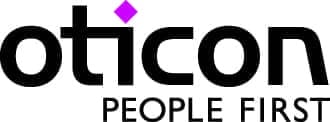December 3, 2007
LOS ANGELES — Several Web sites popular with teens and young adults are currently featuring information about the House Ear Institute’s hearing awareness campaign titled It’s How You Listen That Counts® with prominent placement of Ear Bud, the campaign’s mascot.
Using information gathered through a market research study of teen preferences and behaviors, the Institute launched a redesign of the www.EarBud.org site and its hearing conservation message delivered through interactive pages, quizzes, and teen-friendly tips. An Ear Bud profile that launched on MyYearbook.com in mid-October drew 20,000 new friends within the first 5 days of its initial posting and continues to be a popular page.
The hearing health message gathered additional momentum November 15, when MyYearbook.com links Ear Bud’s page to “The Damage of Rock ‘n Roll,” an editorial piece expected to reach more teens with the message that excessive noise can cause permanent hearing loss. Promotions for Ear Bud and his hearing conservation message are also drawing attention on GamePro.com, a site popular with gamers, as well as Joystiq.com, an AOL blog site.
To build on the success of its initial run on MTV, the campaign’s educational video spot featuring Ear Bud and teens is posted on YouTube.com, and a profile of Ear Bud has attracted a network of friends on MySpace.com. Online promotions for the It’s How You Listen That Counts® campaign will have a total reach of 18.9 million exposures overall by December 31, 2007.
This hearing conservation initiative was first launched in 2006 as part of the House Ear Institute’s Sound Partners™ program in an effort to reach teens and young adults, a high-risk sector of the population vulnerable to permanent hearing loss from noise exposure. It is estimated that children and teens represent roughly half of those suffering from noise-induced hearing loss (NIHL) in the US, with 5.2 million 6-19 year olds showing a hearing loss directly related to noise exposure. There was a 30% increase in awareness of noise and appreciation of the importance of preventing NIHL among the teens surveyed in the Institute’s 2006 campaign, providing the impetus to take the message to the national level.
“The House Ear Institute feels it is imperative to educate teens and young adults on the importance of smart listening habits so they know how to protect their hearing from damage over the long term,” says Marilee Potthoff, program director, House Ear Institute. “The early success of our initiative shows that impacting this younger audience is possible with the right message strategically delivered through the media they favor.”
SOURCE: House Ear Institute




